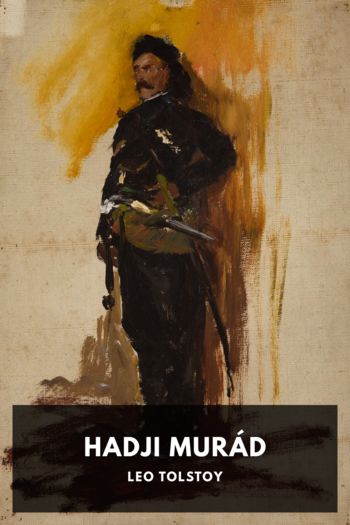Return to Umbria, David Wagner [ink book reader .TXT] 📗

- Author: David Wagner
Book online «Return to Umbria, David Wagner [ink book reader .TXT] 📗». Author David Wagner
LoGuercio had not noticed. “The forensics team is on its way,” he said to Rick as he and Francine appeared from the kitchen. “Before they get here, I’d like these two to look over the bedroom to see if by chance they notice what might be missing. Without touching anything, tell them. Any personal items they think Signora Van Fleet brought to the villa that aren’t there now.”
“In a second, Paolo.” Rick walked to the sofa and sat down next to Gina, putting his arm around her shoulder. He tried to think of something he could say that would comfort her, but nothing came to mind. The book on her lap, he saw, was a photo album. The pictures in it were yellow and faded, but the faces were unmistakable.
“Where did you get this, Gina?”
She found a tissue and blew into it before answering. “It was Mom’s. She showed it to us the day we arrived, and I was looking at it in my room last night before I fell asleep. Look at how happy she looked then, it’s no wonder she wanted to come back one last time.” She gulped when she realized what she’d said.
Rick took the small book and slowly turned the pages. Rhonda Davis smiled up from the plastic, either by herself, or in groups, sometimes in front of some recognizable landmark. The Pantheon in Rome. Perugia’s ancient fountain. The Arno seen from the Ponte Vecchio. He saw many photos around Orvieto, of the squares and buildings that were now familiar to him. He turned another page and his hand froze. A photo showed Rhonda in front of the unmistakable facade of Milan’s Duomo, flanked by two men. Rick was sure this one had been taken by a professional photographer, one who wandered the piazza catering to tourists. It was black and white, its tones crisper than the others on the page. Three pigeons perched on Rhonda’s arm and one was pecking at the bird seed in her hand. Instead of looking at the camera, she was grinning at the handsome man standing on her right. It was the third person in the picture, the other man, whose face had jumped off the page. Rick carefully pulled the photograph from the paper, closed the album, and got to his feet.
“Paolo,” Rick said, “I think we may have found what the burglar was searching for.”
Chapter Fourteen
In the first decade of the fourteenth century, nearly twenty years after construction of the great cathedral of Orvieto had begun, the city fathers were in a panic. How could the structure, as designed, hold the weight of the walls and roof? They had heard stories of other churches crumbling to the ground, often with great loss of life. They wanted Orvieto to become famous for its intact cathedral, not for a disaster while trying to build it. A relatively unknown architect from Siena, Lorenzo Maitani, was brought to Orvieto, made a citizen of the town, and given charge of the project. Surprisingly little was recorded in the local archives about Lorenzo, save that he kept his position until his death twenty years later. Clearly he was a major influence on the eventual design and decoration, including the bottom tier of the spectacular facade. It was that part of the church which has always brought tourists to Orvieto, visitors who then sent the colorful image around the world in postcards and photographs. But Maitani’s true genius was in the interior of the cathedral, a space which displayed a symmetry and balance but which most visitors took for granted. That may have been just what the leaders of Orvieto in 1310 wanted.
“Most tourists spend much of their time staring at the facade,” said Livio Morgante, “then quickly walk through this magnificent expanse to get to the frescoes of the chapel. Che peccato that the part of the cathedral where Maitani’s genius truly shines does not get the attention it should.”
Since they were the only people in the church, he spoke in a normal voice, which echoed off the stone floor and walls. In the piazza the sun was starting to warm the air, but inside the night cold still clung to the stone, and everyone in the group, including Betta, kept their hands deep in the pockets of their wool coats. The priest had let them in the side door and scurried away to get warm, disappearing through an opening somewhere near the transept.
The number of people in the tour was what Betta had expected, given what Morgante had said when he gave them the invitation. The tourism chief had introduced her to Bianca Cappello, but the need to start the tour had prevented her from meeting others. Just as well, since she didn’t want to shake the hand of Vincenzo Aragona. There were other women besides Bianca, but most of the group was male. Betta looked around, trying to guess which of them was Crivelli, but couldn’t decide.
Everyone listened as Morgante explained how the massive columns played their structural role while drawing together the other architectural elements of the apse, including the half-circle window niches and the towering ceiling. The group’s eyes moved as Morgante’s narrative shifted from one feature to the next, and everyone stayed politely silent as he spoke.
They walked to the middle of the transept, the central point of the cross the building itself formed. Morgante explained the design problems that the site had brought to the architect, forcing him to set aside exact symmetry in the face of practical considerations, and how he managed to hide it from the eye. The group walked a few steps up from the cathedral floor into the San Brizio Chapel, which held the most important artwork in the city—the frescoes of Luca Signorelli. Morgante was just beginning his speech about the paintings when the faint sound of the side door opening and closing reached their ears.
Betta was relieved. Rick had made it after all, and had only missed





Comments (0)